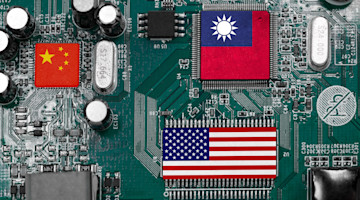“I got hot sauce in my bag swag.”
– Beyoncé
1. Nvidia Humanoid Robotics
Why is Nvidia making a humanoid robot? They know you don't literally “mine” bitcoins, right? As it turns out, they’ve launched new tools to accelerate humanoid robotics development, providing services, models, and computing platforms to robot manufacturers and AI developers. Regardless of how you may feel about how they handled the release of the 30-series RTX cards, mentioning the Nvidia brand alone can spread awareness of the manufacturing industry to young gamers worldwide. .
2. Harder, Better, Faster, Stronger
Colin Chapman, one of my heroes, once said, “Simplify and add lightness.” Well, that’s really hard to do with a rocket engine. They’re already pretty simple: Contain stuff that burns, ignite the stuff that burns, direct the burn downward, and go up. So how did SpaceX simplify their rocket and add lightness? They did it with material science and metal additive manufacturing.
3. 3D Printer Lattice Water Filtration
I love my fridge, especially the filtered and chilled water dispenser. However, if I’m not on top of replacing that stupid $40 filter exactly every six months, the water flow is reduced to dribbling out like a geriatric Kyle “Slow Mo” Anderson. But what if you could 3D print filters? Not yet, but we’ll get there. Filtration tech is booming, though! The University of Bath (fitting) has developed 3D printed ceramic lattices using indium oxide ink that can remove 75% of harmful "forever chemicals" (PFAS) from water.
4. The Next Buzzword: OpenUSD
Nvidia's Omniverse heavily relies on Open-Source Universal Scene Description (OpenUSD) to enable its functions and features. OpenUSD, developed by Pixar, is a framework that allows for the interchange of 3D computer graphics data. It facilitates collaboration across various tools and platforms in real time, enhancing productivity and innovation in industries ranging from architecture to manufacturing to entertainment.
4. Compact PCBs Are Charming
The CHARM3D method allows 3D printing of conductive, freestanding metal circuits, ideal for tight spaces where traditional PCBs fall short. Developed by researchers at the National University of Singapore, this technique uses Field’s metal, creating self-healing, highly conductive structures without support. Capable of printing fine microwires quickly, CHARM3D has potential applications in wearable electronics, health care, and beyond.
To get the latest tech developments delivered directly to your inbox, subscribe to the weekly Tech Report here.
To access Tech Trends, log in to or register for an MTInsight account at https://www.mtinsight.org/









